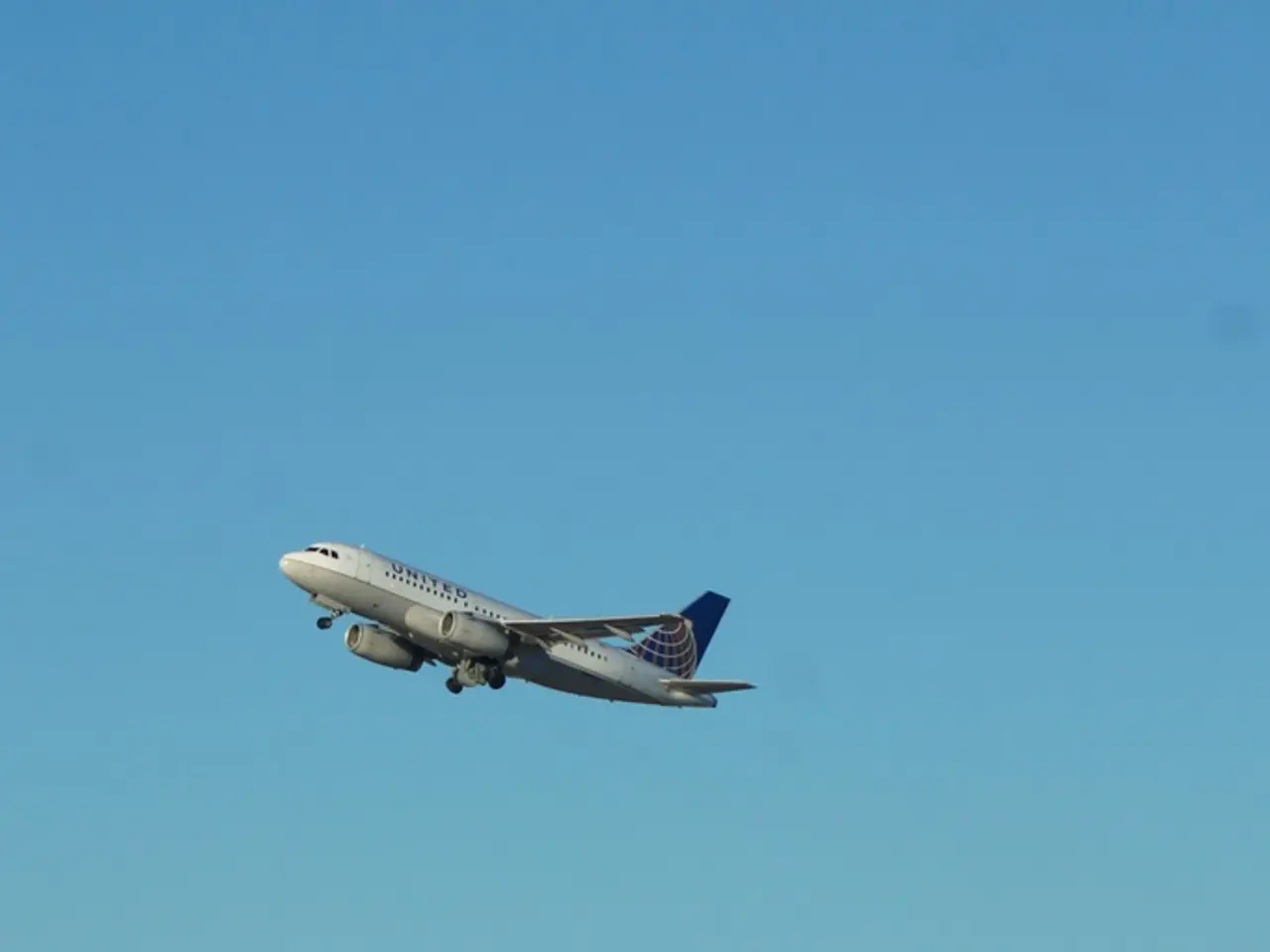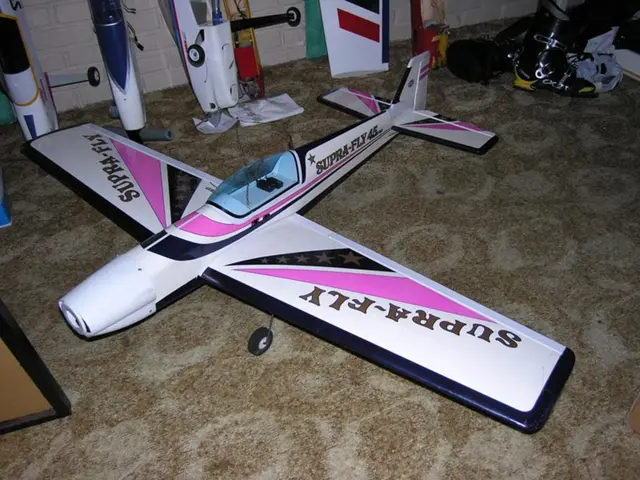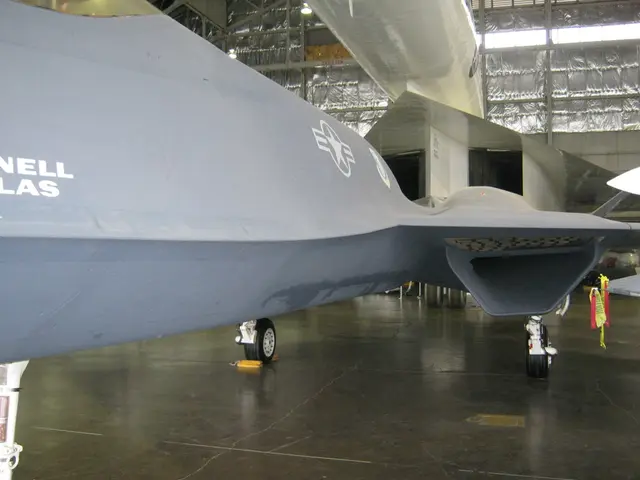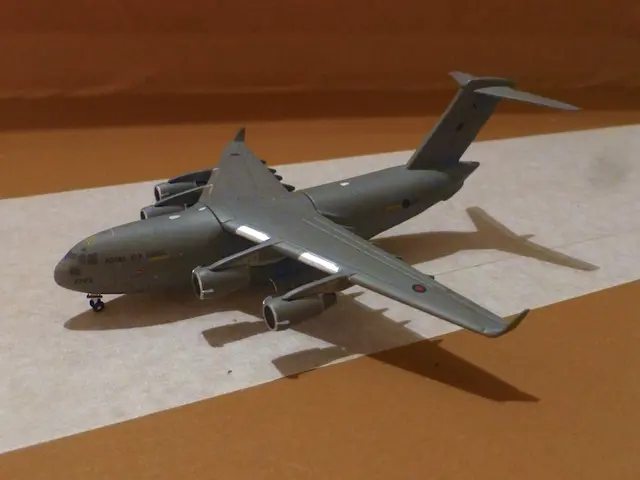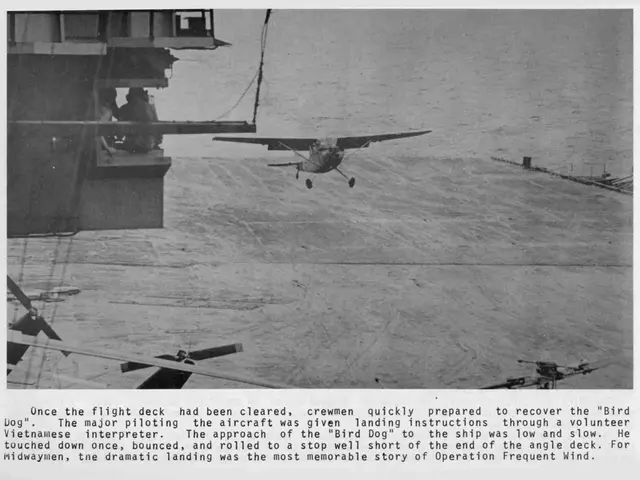Navigating Nighttime Visual Landing Approaches: A Guide to Safe Execution
Flying Safely During Night Visual Approaches: Avoiding Controlled Flight Into Terrain (CFIT) Accidents
Navigating visual approaches during night hours can be a challenging task for pilots, especially in the Instrument Flight Rules (IFR) world. The lack of visual cues, being far from the airport, and being high above the ground can increase the risk of Controlled Flight Into Terrain (CFIT) accidents, particularly the "black hole effect" where the absence of visual references creates an illusion of being higher than the actual altitude.
To ensure a safe and successful night visual approach, pilots should follow a set of guidelines.
Preparation is Key
Before starting the descent, it's crucial to ensure the airport lighting is clearly visible and that you are inside the service volume of the visual glide slope indicator. This step helps prevent collisions with terrain or obstacles.
If contact with airport lighting is lost at night, it often signals obscured visibility due to clouds or terrain in the flight path. In such situations, it's essential to be prepared to initiate a go-around immediately.
Pre-briefing a go-around scenario considering terrain, weather, traffic, and available runways can help pilots respond effectively if visual references are lost or conditions deteriorate.
Maintaining a Stabilized Approach
Maintaining a stabilized approach is another crucial step. This involves being on the correct speed, flight path, and configured for landing well before descending below minimum stabilized approach height (typically 1,000 feet above airport elevation). Special attention should be given to depth perception challenges at night.
Terrain Awareness and Training
Relying on minimum safe altitudes (MSA) and terrain awareness is also important. This involves reviewing the highest terrain en route and adding safety margins to avoid CFIT, as visual cues at night are often insufficient due to darkness and the black hole illusion.
Training to recognize and fight illusions like the black hole effect can help pilots avoid flying lower than intended due to the brain misjudging the lack of visual terrain cues.
Utilizing Runway and Approach Lighting Systems
Effective use of runway and approach lighting systems can assist with maintaining proper glide slope and distance judgment despite poor night visual cues. Approach lights, threshold lights, and Precision Approach Path Indicators (PAPIs) are all valuable tools in this regard.
Instrument Scanning and Night Flying Skills
Keeping a close eye on instruments, especially when outside visual cues are limited, can help pilots stay on safe glide paths and avoid distractions from incomplete or misleading visual information.
Regular practice of night flying skills, including training under simulated visual deprivation, can help maintain instrument proficiency and recognition of night illusions.
Staying Aligned and Clear
Using a precision approach for a visual approach ensures alignment with the correct runway and provides a stable, safe approach all the way to touchdown. If there's no published missed approach procedure for a visual approach at non-towered airports, it's essential to pre-brief your go-around scenario based on terrain, available runways, weather, and nearby traffic.
At tower-controlled airports, the tower will provide missed approach instructions. Even if there's only a non-precision approach for a runway, following the altitudes along the final approach course keeps you clear of obstacles.
To avoid mistaking a highway for a runway, pilots should zoom in on their GPS, load an approach, look for the airport's rotating beacon, and change the runway lighting intensity. Some airports, like Cortez, CO, have brightly lit highways near them that can be mistaken for a runway or approach lighting system.
In summary, combining careful visual checks, strict go-around readiness, stabilized approach techniques, terrain awareness, and training against night illusions and CFIT risks enhances safety for night visual approaches and mitigates hazards like the black hole effect.
For more real-world flying tips and information, consider subscribing to the Boldmethod email, which provides insights directly to your inbox each week. Boldmethod also offers an Instrument Procedures course to help pilots earn their instrument rating and master IFR flying.
- The lack of visual cues and being far from the airport during night visual approaches increases the risk of Controlled Flight Into Terrain (CFIT) accidents.
- Before starting the descent, pilots should ensure the airport lighting is clearly visible and they are inside the service volume of the visual glide slope indicator.
- If contact with airport lighting is lost at night, it's essential to be prepared to initiate a go-around immediately.
- To respond effectively if visual references are lost or conditions deteriorate, pre-briefing a go-around scenario considering terrain, weather, traffic, and available runways can help pilots.
- Maintaining a stabilized approach is crucial, involving being on the correct speed, flight path, and configured for landing well before descending below minimum stabilized approach height.
- Relying on minimum safe altitudes (MSA) and terrain awareness is important for avoiding CFIT, as visual cues at night are often insufficient due to darkness and the black hole illusion.
- Utilizing runway and approach lighting systems can assist with maintaining proper glide slope and distance judgment despite poor night visual cues.
- Keeping a close eye on instruments and practicing night flying skills can help pilots stay on safe glide paths and avoid distractions from incomplete or misleading visual information.
